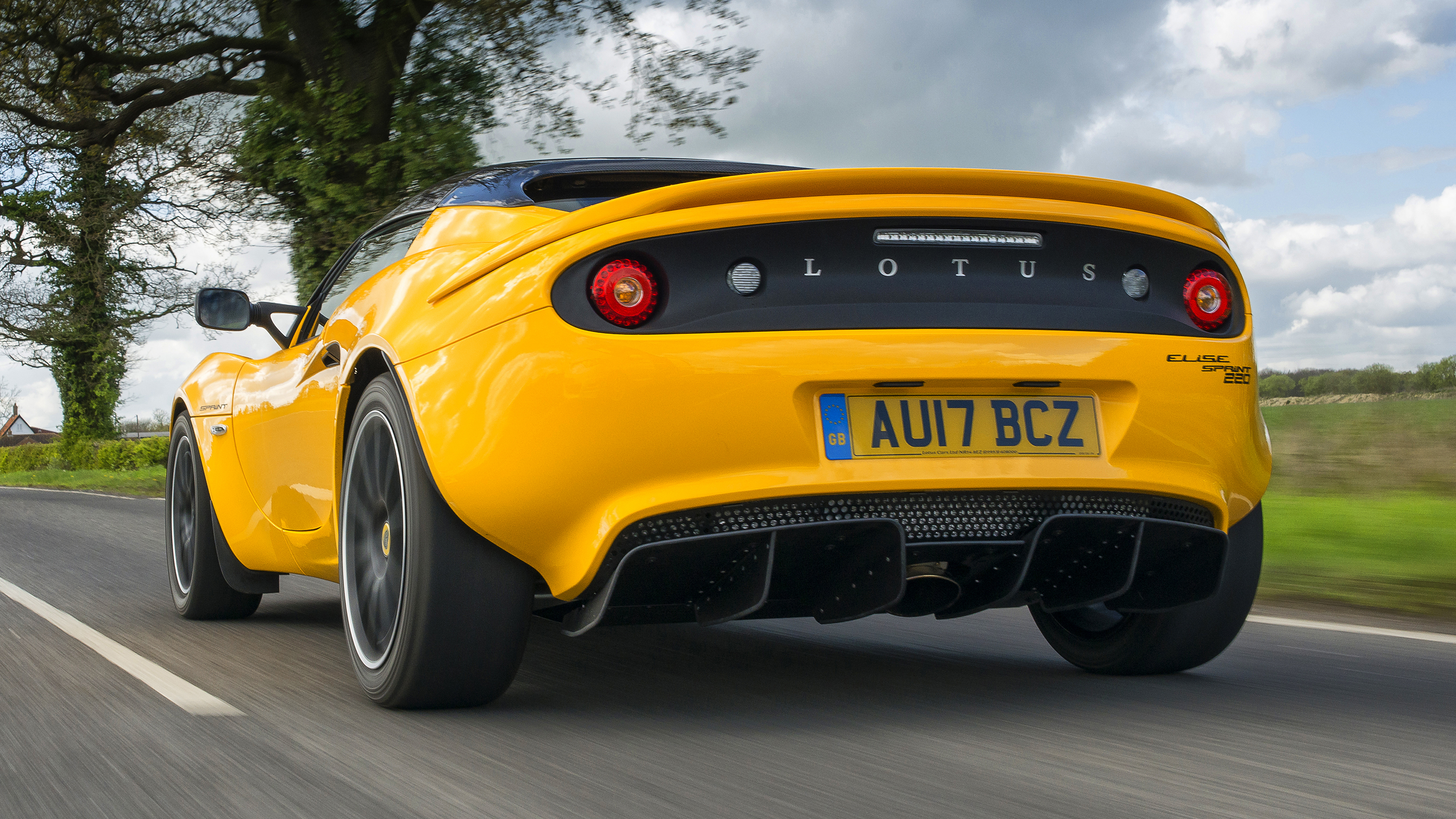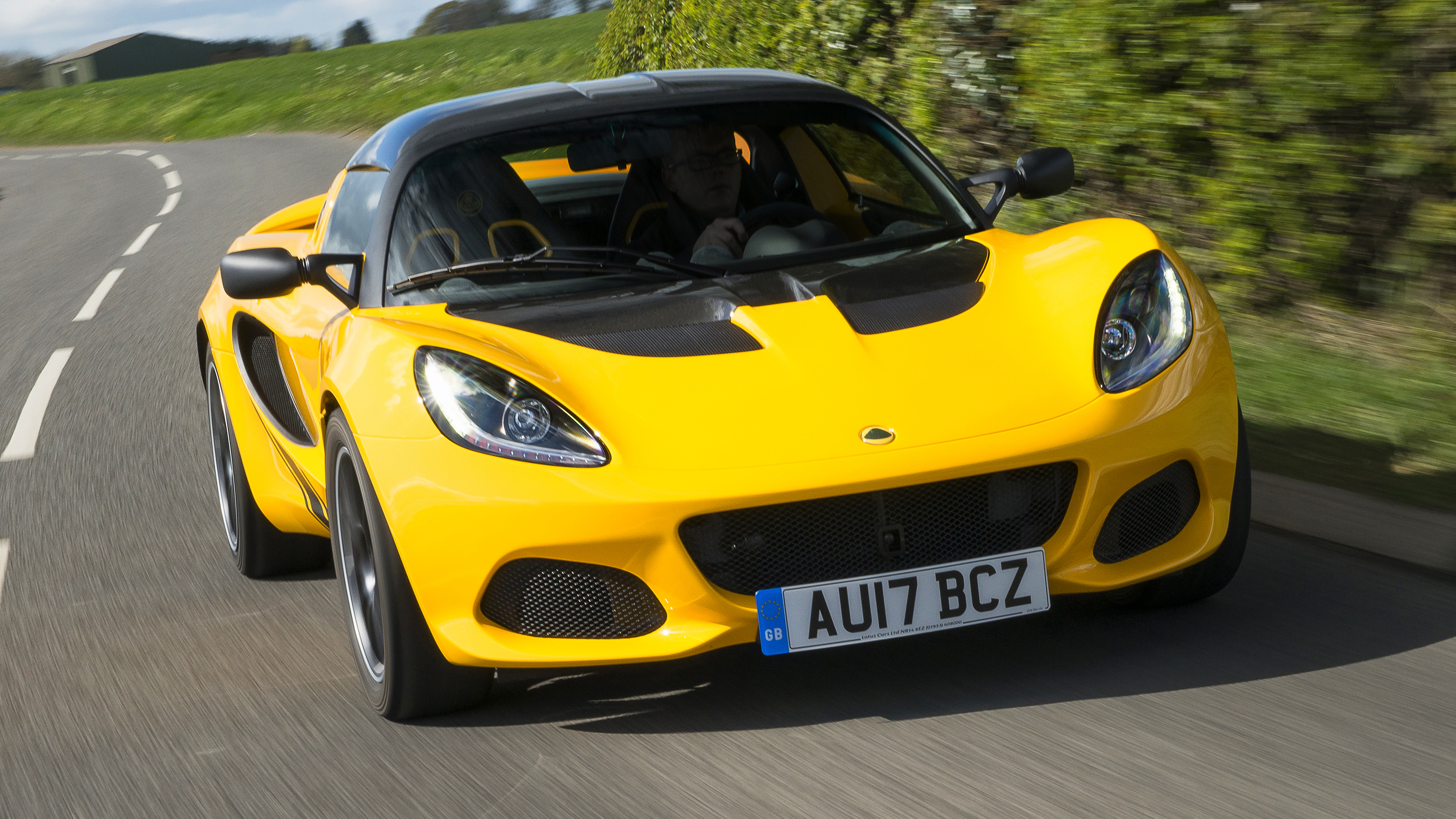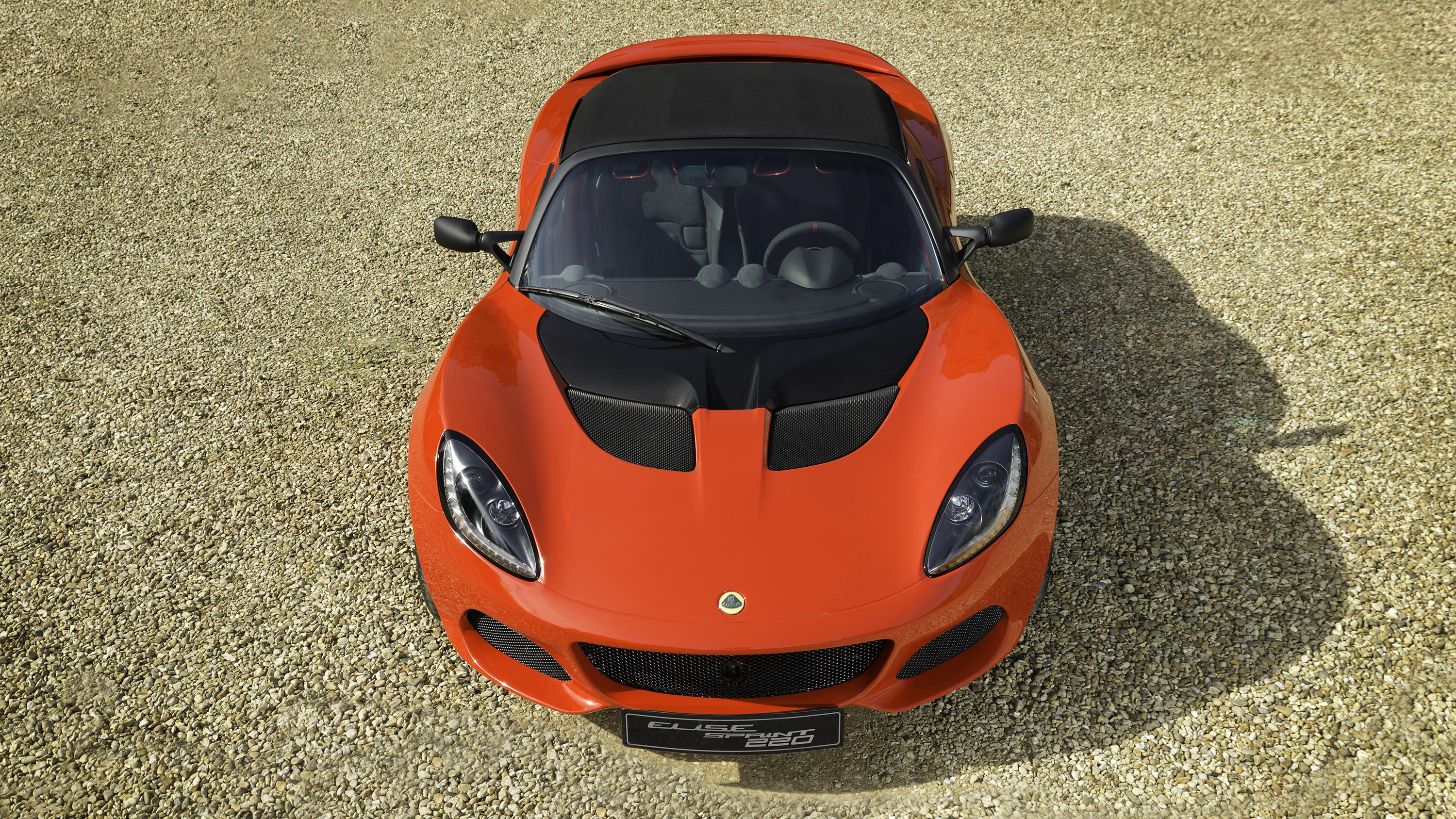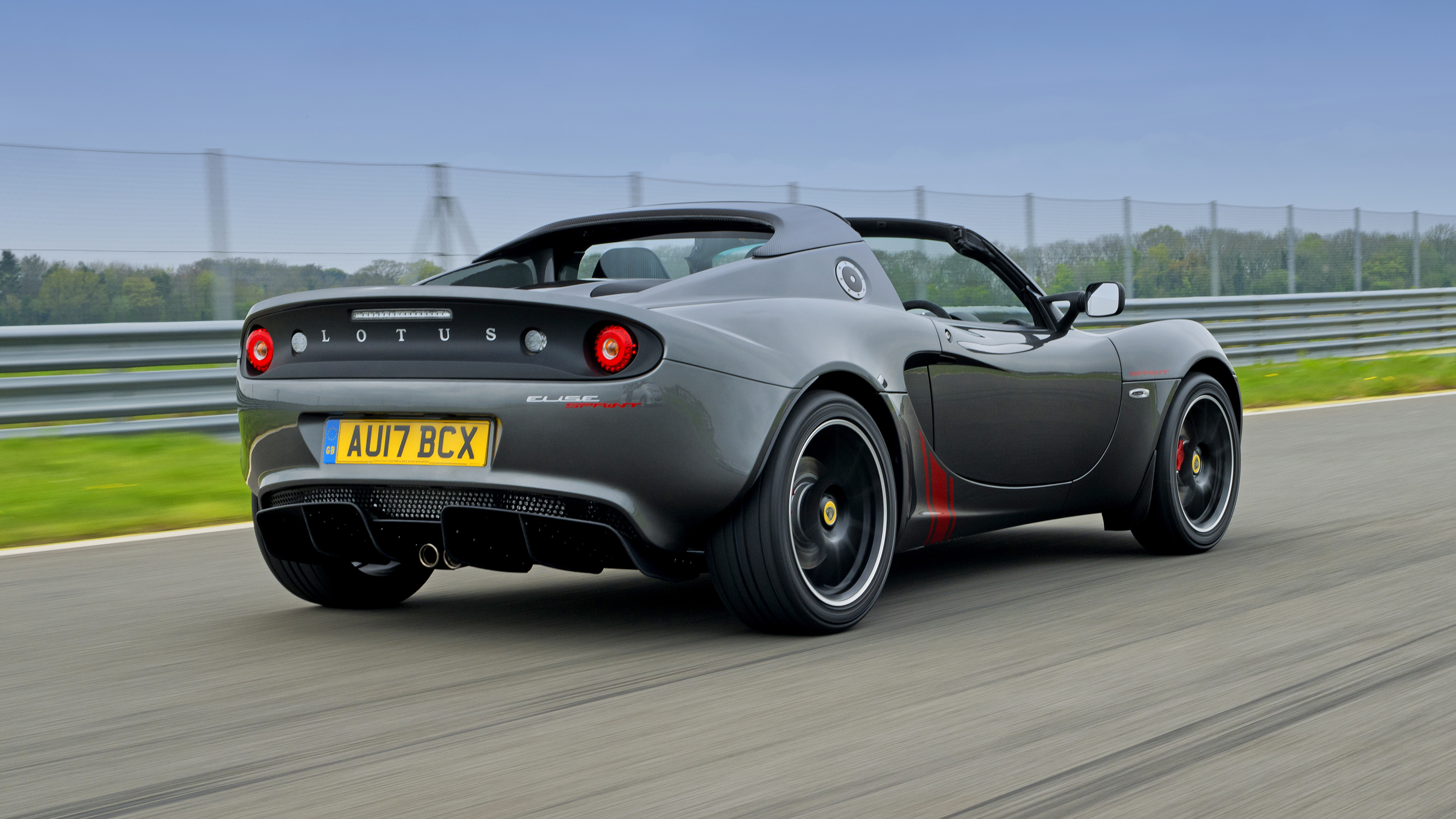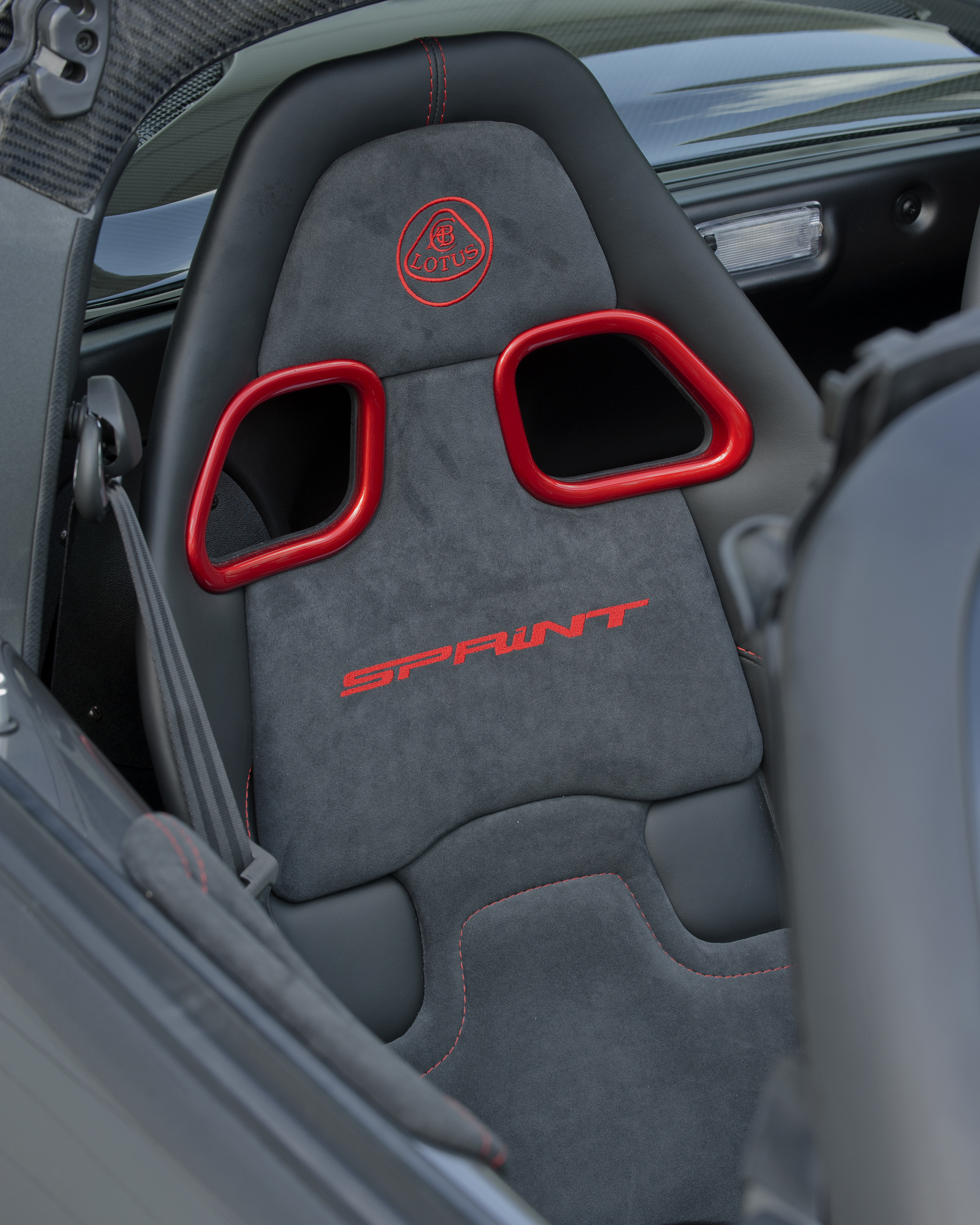
SPEC HIGHLIGHTS
- BHP
136bhp
- 0-62
5.9s
- CO2
149g/km
- Max Speed
127Mph
- Insurance
group42D
What joy on the English Spring day to be out in a Lotus Elise…
Oh absolutely. And this is the 2017 Lotus Elise Sprint.
What's new for 2017, and what's Sprint?
Two lots of changes. For 2017 all Elises have a new nose, bigger of nostril. And at the rear, the new panel has one large light unit at each side, and one smaller one. A new aluminium diffuser sits below the tail. Simple changes that modernise things, without becoming some Franken-facelift that ill-matches the untouched side view. It's harmonious.
In the cabin, the instruments are now white on black. That means you can now actually read them at twilight. A change 21 years too late in coming. The chassis and suspension settings go untouched for this year.
The ‘Sprint’ thing?
That's all about weight. The Elise range goes like this: Sport, Sprint (they both have unsupercharged 1.6 136bhp engines) then Sport 220 and Sprint 220 (both with a superchaged 1.8 at 220bhp) and finally the Cup 250 (the same engine, but 250bhp and less weight). The two Sprint cars get a lot of the weight-saving measures of the Cup 250.
So how light exactly?
Well if you take the low-power Sprint, tick the lightweight options, and remove the roof, you get to 798kg dry, or about 831kg at the kerb. Which is about as light as the first Elise. A car that had no airbag, or 6th gear, or ABS, or brake servo, or central locking. All are present here.
What have they done to get it so low?
Top Gear
Newsletter
Thank you for subscribing to our newsletter. Look out for your regular round-up of news, reviews and offers in your inbox.
Get all the latest news, reviews and exclusives, direct to your inbox.
The list is long, so if you're time-poor, cut to the asterisk below the next picture gallery...
A hot drink is in my hand. Give me the list.
The new body parts – just the nose and tail – mean that both the Sports and Sprints lose 9kg compared with last year’s car.
All Elises now have an exposed gearshift, taken from the Exige. It's 1kg lighter than the old enclosed arrangement, and it looks wonderful. The cradle of machined aluminium parts slide and pivot in intriguing directions when you move the lever. They make a delightful and emphatic mechanical handshake when you shift gears.
So all Elises are 10kg lighter than last year's crop. Then the Sprint brings in an extra package of 26kg of lighter parts as standard. And finally 5kg more of savings is available via more options.
Carbonfibre parts save another 5.1kg – the front access panel, the rear engine cover/boot lid, and the roll hoop cover. The rear window is polycarbonate, another 0.9kg saved. The seats have carbonfibre shells, losing 6kg. The battery is a lithium ion one, 9kg lighter than the normal lead-acid item. Forged Rimstock wheels save 5kg.
The options are lightweight two-part brake disc assemblies, and a carbonfibre hardtop. Sprint-ifiying an Elise is £5k. Those last options are coming in summer and as-yet-unpriced, but you can see every un-kilo costs big money.
You can also put some back: a stereo is 2kg and air conditioning is 2.5kg.
*Thank you. Do you feel the weight loss in acceleration?
Back-to-back, perhaps. But it's not transformative.
Anyway, even the base Elise Sprint brings the almost-lost pleasure of life without a turbo. Press the accelerator and the reward is exactly the response you expected. And right now. It brings a forgotten dimension of precision into the drive.
That said, it manages only 118lb ft at 4,400rpm. The power peaks at 6,600rpm, then the rev-limiter ambushes you at 7,000rpm. So you have to be paying attention to be in the right gear all the time. Acceleration isn't at all bad: it covers 0-62 in 6.3 seconds, and by that time you've already done two gearshifts.
If you're driving a road you know well, it's satisfying to wring the very most out of this keen little engine. But if you don't know the shape of the next corner, you can sometimes get it wrong and be bogged with little torque to help.
The supercharged car is a different thing. You can use the whole rpm range, and the surge towards the red-line is close to violent. And there's a whole bunch of extra torque. Once again, no dim-witted turbo lag either. Touch the throttle and it wakes up immediately. So you can drive it in a gear higher than the unsupercharged car and still depart rapidly from any corner. Plus your ears are caressed by the 220's rich baritone exhaust – another new feature for 2017.
Jolly good, but Elises are all about the handling aren't they?
Yes. And again, less weight means more agility. Provided you yourself have been off the pies or don't have a passenger. Again, the Sprint's changes are good to have, but undramatic versus the standard car – so much so that there has been no need to re-rate the springs compared with last year's car.
Any Elise gives chassis sensations that are unique to all Elises. The steering is the dominant thing. The small wheel actually needs relatively big hand movements – there's none of 2017's fashionable twitchiness. It needs to be low-geared because it's not power assisted. And this nakedness bestows wonderful secrets. You can read the road, and know what forces the tyres are developing. As the car starts to understeer, the wheel rim goes light.
It's not just about feedback. It's sharp like a chef's knife, so you can carve your perfect curve though corners. The springs are flexible enough that it doesn't much get bounced around by bumps either.
All of this life in the system means it hardly matters that the self-centring is odd, indeed all but absent up to about 20 degrees either side of straight. If you took your hands off the wheel it'd keep on describing a big circle all day. So you have to pay attention on motorways.
I’m immature. Does it slide?
An Elise can generate big grip from its little tyres. But it's an understeerer first of all. And even on a track where there's room to get it wrong, it's not a power-oversteerer. There's no limited-slip diff, so it spins up the inside tyre.
That's not to say it's a boring track car. On the road I drove with stndard tyres. On the track I tried the optional set of wider front tyres, sticky Yokohama Advan A048s, that cancel much (not all) of the understeer. So now the trick is to rotate the tail a little by a small lift on entry, and feel its wonderful transparent balance on the way out.
The body's new aero also makes it more stable in the quick stuff. And the brakes remain wonderful, well up to the challenges of the 220 engine that most trackday fans would surely specify.
But it's a road car isn't it?
On its day, joyfully so. Annoyingly the Elise is blustery at high speed with its roof off – a Mazda MX-5's cockpit is much less turbulent. And there is tyre noise. But otherwise, it's a workable long-distance prospect.
The boot will just engorge a couple of weekend bags, and the cockpit has storage space. You can even have Bluetooth this year, so you can phone someone up and then not hear a word they're saying.
Mostly though it's a recreational blaster, a cure to the ills of 2017. I found myself stopped at a junction behind the big fat backside of a Mercedes GLE Coupe SUV. Then I realised it was only a C-class Coupe. Everything gets re-scaled alongside the Elise's tiny size and weight.
No car for the money gives you less car. But no car for the money gives you more sensation.
Featured

Trending this week
- Car Review
BMW 1 Series
- Top Gear's Top 9
Nine dreadful bits of 'homeware' made by carmakers




